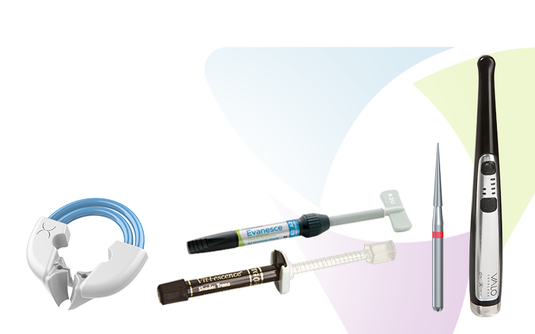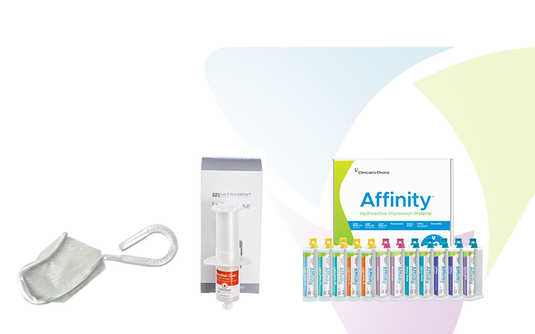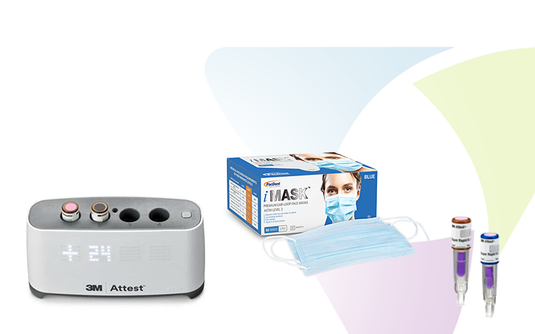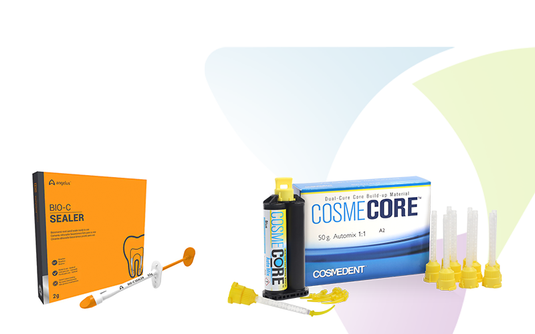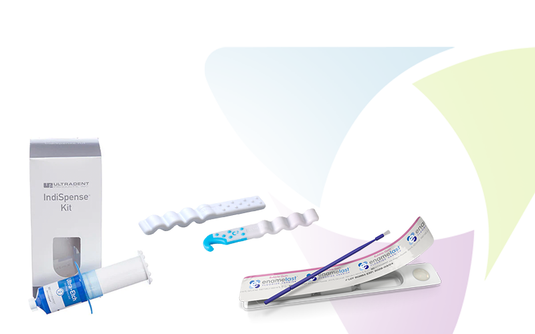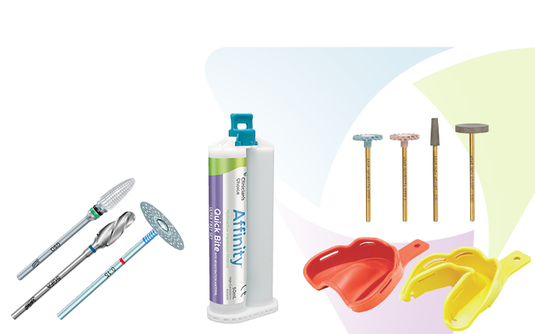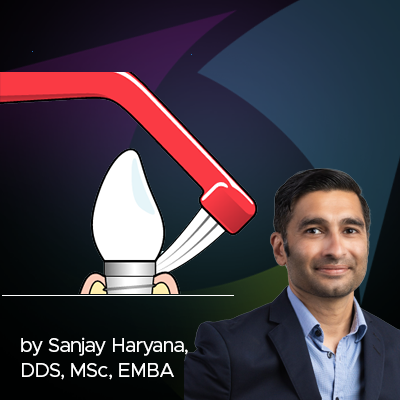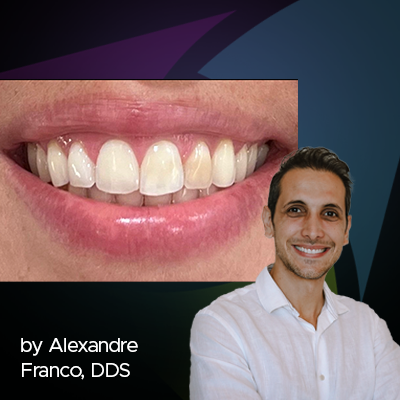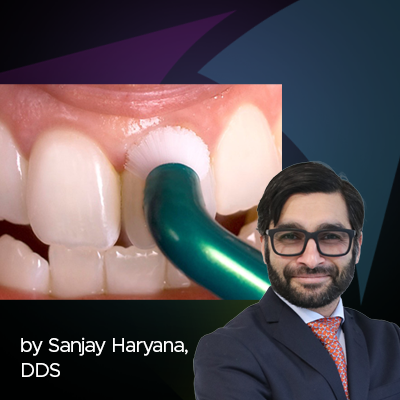
Implant Maintenance – Fundamental for Preventing Peri-Implant Disease
Laying the Foundation for Implant Success
It is important to keep in mind that implant treatment begins even before the placement of the implant. First, it needs to be decided whether rehabilitation with dental implants is the best treatment option and whether periodontal supportive therapy is available or accessible for the patient. Second, it is critical to inform the patient of the need for life-long maintenance and optimal self-performed plaque control, as well as potential risks. Thus, the foundation for a successful treatment outcome starts before the placement of the implant.
Prevalence of Peri-Implant Disease
The definition of peri-implant diseases is an “inflammatory condition that affects the peri-implant tissues and are induced by peri-implant biofilm”. Peri-implant mucositis is an inflammation process of the peri-implant mucosa in absence of marginal bone-loss, while periimplantitis display a progressive loss of marginal bone. Placing an implant in the oral environment poses a risk for disease development since the implant offers a retention site for build-up of a biofilm, which is the main cause of peri-implant diseases, if not maintained.
Prevalence of peri-implant diseases varies, due to inconsistencies in study results, primarily as there has not been a consensus of the definition of peri-implant diseases until 2018. The prevalence of peri-implant mucositis ranges from 19-65% (weighted mean 43%), and the corresponding figure for peri-implantitis is 1-47% (weighted mean 22%). The wide discrepancies in prevalence are the result of differences such as study design, disease criteria and patient criteria.
Individually Tailored Maintenance Is Crucial
Prevention of peri-implant diseases or the recurrence of the diseases must always be the primary goal of a maintenance programme. Such a programme needs to be individually tailored to the patient’s risk profile, which should also be re-evaluated over time. History of severe periodontitis, poor oral hygiene/plaque control and no regular supportive peri-implant care (SPIC) have been established as the primary risk factors for the development of peri-implant diseases.
Patients treated for periodontitis with a good outcome that comply and adhere to a periodontal maintenance programme do not automatically classify as risk patients. Other risk factors such as submucosal residual cement, poorly controlled diabetes and smoking have less conclusive evidence and need further research.
It must be pointed out how important it is for the patient to know the role of good oral hygiene for peri-implant health and treatment success. Raising the awareness of the patient’s responsibility in regard to a positive outcome needs to be a natural part of the patient’s education. The therapist’s responsibility is to design a supra-structure that allows access to the implant surfaces, to be able to clean around the implants. If this is not the case, it is recommended that the supra-structure
be modified to create optimal access for oral hygiene tools.
Considering this, it is evident that the patient is strongly dependent on the therapist and on a well-designed maintenance programme. In a population with peri-implant mucositis, research shows that those who are not enrolled in a maintenance programme have a high incidence of peri-implantitis. A well-designed maintenance programme that includes patient education is therefore a prerequisite for preventing disease development and progression.
There is no consensus concerning the ideal recall interval during the maintenance phase of patients with healthy peri-implant tissue and intervals in studies ranges from every 3 month to once a year. The optimal interval differs with the risk profile of the patient, as well as the patient’s capability of performing oral home care following the recommendations. On the other hand, following non-surgical peri-implantitis treatment the SPIC interval is recommended to be every 3-4 month for the first year. Thereafter, a new risk assessment is performed, and the new SPIC intervals should be tailored for the individual patient depending on risk factors. While oral hygiene education already starts before placing the implant, it is of utmost importance to ensure that education is prevalent throughout the maintenance programme in combination with coaching.
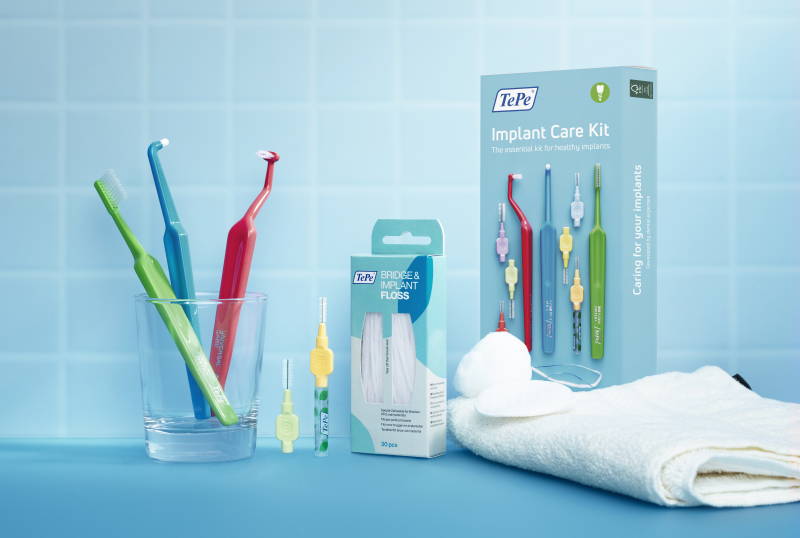
TePe developed a kit with products that complement implant hygiene in any patient.
Assessing the Level of Oral Hygiene
At the maintenance visit, it is of great importance to assess the patient’s level of self-performed oral hygiene and look for signs of disease such as redness, swelling and/or suppuration, as well as bleeding on probing, which is the key parameter for diagnosing peri-implant mucositis. Oedema and decreased probing resistance usually result in an increased probing depth and pocket depth up to 6 mm is still considered peri-implant mucositis as long as there is no sign of marginal bone loss. Detecting early signs of peri-implant disease is important to avoid progression of the disease. Peri-implant mucositis is a reversible disease but can take up to 3 weeks to resolve. If left untreated it can progress into peri-implantitis, which is much more difficult to treat and is an irreversible condition. The treatment of peri-implant diseases can be non-surgical or surgical, but reinforcement of optimal oral hygiene is always needed for a successful and long-term outcome
Risk and Success Factors
Control of the biofilm building up at the implant surfaces is significantly important for peri-implant health. According to studies, poor oral hygiene is considered one of the most critical risk factors for the development of peri-implant disease, while good plaque control is one of the most important factors for success and predictability of implant treatment. There are also indications that a stronger inflammatory response will occur in the peri-implant mucosa due to plaque accumulating around implants, compared to the tissue reaction to plaque build-up around natural teeth. Animal studies also show support that the lesion will be more severe in the peri-implant mucosa than in the tissue around natural teeth.
Guiding the Patient to Proper Self-Care
To meet different oral hygiene needs, a broad spectrum of cleaning devices is available on the market. Interdental brushes of adequate size or floss are recommended for the inter-implant area at least once a day, and for other sites it is recommended to use a regular toothbrush in combination with specialty brushes according to the patient’s needs. It is the therapist’s responsibility to guide the patient to the most suitable devices, to educate the patient on their usage, and to make sure that the patient masters the technique. After this, it is up to the patient to perform daily oral home care following the therapist’s instructions.
It must be pointed out how important it is for the patient to know the role of good oral hygiene for peri-implant health and treatment success. Raising the awareness of the patient’s responsibility in regard to a positive outcome needs to be a natural part of the patient’s education. The therapist’s responsibility is to design a supra-structure that allows access to the implant surfaces, to be able to clean around the implants. If this is not the case, it is recommended that the supra-structure
be modified to create optimal access for oral hygiene tools.
Considering this, it is evident that the patient is strongly dependent on the therapist and on a well-designed maintenance programme. In a population with peri-implant mucositis, research shows that those who are not enrolled in a maintenance programme have a high incidence of peri-implantitis. A well-designed maintenance programme that includes patient education is therefore a prerequisite for preventing disease development and progression.
Conclusion
The replacement of missing teeth with dental implants is a well established and acknowledged treatment. Creating the very best conditions for the treatment is fundamental to preventing disease, and the long-term outcome depends on several factors, but especially control of the biofilm. The patient relies on professional education, quality maintenance, and self-performed plaque control, which together pave the way for the long-lasting, ideally life-long, benefits of a successful implant rehabilitation.
REFERENCES
Albrektsson T, Dahlin C, Jemt T, Sennerby L, Turri A, Wennerberg A.
Is marginal bone loss around oral implants the result of a provoked foreign body reaction?
Clin Implant Dent Relat Res. 2014 Apr;16(2):155-65.
Armitage GC, Xenoudi P.
Post-treatment supportive care for the natural dentition and dental implants.
Periodontol 2000. 2016 Jun;71(1):164-84.
Costa FO, Takenaka-Martinez S, Cota LO, Ferreira SD, Silva GL, Costa JE.
Peri-implant disease in subjects with and without preventive maintenance: a 5-year follow-up.
J Clin Periodontol. 2012 Feb;39(2):173-81.
Derks J, Tomasi C.
Peri-implant health and disease. A systematic review of current epidemiology.
J Clin Periodontol. 2015 Apr;42 Suppl 16:S158-71.
Herrera D, Berglundh T, Schwarz F, Chapple I, Jepsen S, Sculean A, Kebschull M, Papapanou PN, Tonetti MS, Sanz M;
EFP workshop participants and methodological consultant.
Prevention and treatment of peri-implant diseases-The EFP S3 level clinical practice guideline.
J Clin Periodontol. 2023 Jun;50 Suppl 26:4-76. doi: 10.1111/jcpe.13823. Epub 2023 Jun 4. PMID: 37271498.
Howe MS.
Implant maintenance treatment and peri-implant health.
Evid Based Dent. 2017 Mar;18(1):8-10.
Jepsen S, Berglundh T, Genco R, Aass AM, Demirel K, Derks J, Figuero E, Giovannoli JL, Goldstein M, Lambert F, Ortiz-
Vigon A, Polyzois I, Salvi GE, Schwarz F, Serino G, Tomasi C, Zitzmann NU.
Primary prevention of peri-implantitis: managing peri-implant mucositis.
J Clin Periodontol. 2015 Apr;42 Suppl 16:S152-7.
Mombelli A, Müller N, Cionca N.
The epidemiology of peri-implantitis.
Clin Oral Implants Res. 2012 Oct;23 Suppl 6:67-76.
Monje A, Aranda L, Diaz KT, Alarcón MA, Bagramian RA, Wang HL, Catena A.
Impact of Maintenance Therapy for the Prevention of Peri-implant Diseases: A Systematic Review and Meta-analysis.
J Dent Res. 2016 Apr;95(4):372-9.
Renvert S, Lindahl C, Persson GR.
Occurrence of cases with peri-implant mucositis or peri-implantitis in a 21-26 years follow-up study.
J Clin Periodontol. 2018 Feb;45(2):233-240.
Renvert S, Polyzois I.
Treatment of pathologic peri-implant pockets.
Periodontol 2000. 2018 Feb;76(1):180-190.
Salvi GE, Ramseier CA.
Efficacy of patient-administered mechanical and/or chemical plaque control protocols in the management of periimplant
mucositis. A systematic review.
J Clin Periodontol. 2015 Apr;42 Suppl 16:S187-201.
Salvi GE, Cosgarea R2, Sculean A.
Prevalence and Mechanisms of Peri-implant Diseases.
J Dent Res. 2017 Jan;96(1):31-37.
Serino G, Ström C.
Peri-implantitis in partially edentulous patients: association with inadequate plaque control.
Clin Oral Implants Res. 2009 Feb;20(2):169-74.
Featured Products
About the Author

Sanjay Haryana, DDS, MSc, EMBA
Dr Sanjay Haryana received his DDS in 2002 from Malmö University, Faculty of Dentistry. He worked privately in Malmö, Sweden in a general practice with a special focus on implants, where he together with the Maxillo-Facial surgeon placed and restored implants. In 2005 he moved to London, UK, where he lived for 13 years. He mainly worked for a private independent group practice in the city of London, where he also was the clinical director. During his time in London, he completed a MSc in Aesthetic and Restorative Dentistry at University of Manchester and an MBA from Surrey University. Returning to Sweden, he joined the Nordic subsidiary of TePe Oral Hygiene Products. Dr Haryana is now responsible for the internal and external education program at TePe Nordic and for quality control within the Nordic subsidiary. Dr Haryana lectures nationally and internationally with topics connected to oral hygiene, sales psychology and sustainability.
Discover More
This article was originally published in the Clinical Life™ magazine: Winter 2024 edition
Clinical Life™ magazine is a premier periodical publication by Clinical Research Dental Supplies & Services Inc. Discover compelling clinical cases from Canadian and US dental professionals, cutting-edge techniques, product insights, and continuing education events.

